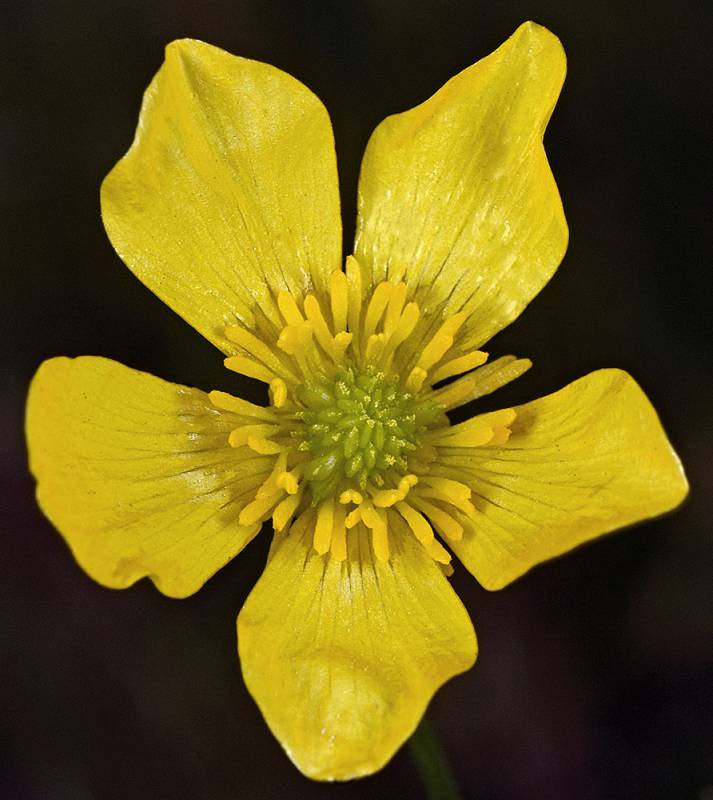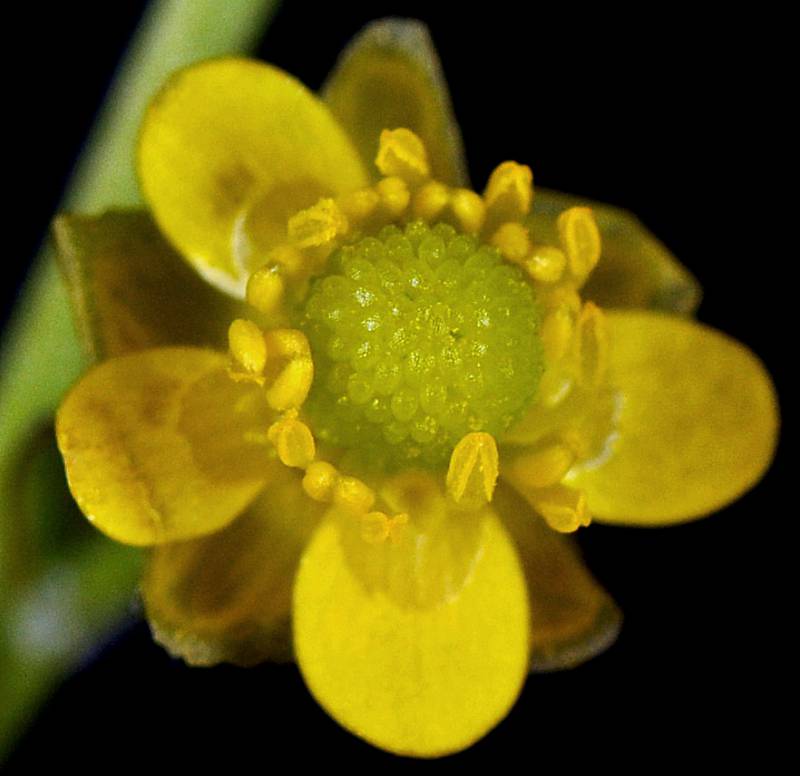Ranunculus sardous
Ranunculus sceleratus
hairy buttercup
blister buttercup, celery-leaved buttercup, celery-leaved crowfoot
Basal leaves long-petiolate, the blades reniform, 2.5-4 cm. long, deeply parted into 3 wedge-shaped segments, and again once or twice less-deeply lobed or toothed;
cauline leaves numerous, alternate, more deeply divided than the basal leaves.
Pedicels single-flowered, stout, 1-3 cm. long;
sepals 5, spreading, yellowish, 2-4.5 mm. long, deciduous;
petals 5, yellow, 2-5 mm. long;;
nectary scale mostly attached;
receptacle cylindric, up to 14 mm. long;
stamens 15-20;
pistils 100-250.
Achenes about 1 mm. long with corky margins;
style nearly obsolete.
Ranunculus sardous
Ranunculus sceleratus
Occurring west of the Cascade in Washington; British Columbia to northern California; also in the eastern United States, Europe, Australia and Pacific Islands.
Widely distributed throughout much of Washington; widely distributed throughout much of North America.
- Local floras:
BC,
CA,
OR,
WA
- Local Web sites:
CalFlora,
CalPhotos,
Flora NW,
PNW Herbaria
WildflowerSearch
iNaturalist (observations)
USDA Plants Database
- LBJ Wildflower Center
- SEINet
- Plants of the World Online
- Encyclopedia of Life
- Wikipedia
- Google Image Search
- Local floras:
BC,
CA,
OR,
WA
- Local Web sites:
CalFlora,
CalPhotos,
Flora NW,
PNW Herbaria,
Turner Photog.
WildflowerSearch
iNaturalist (observations)
USDA Plants Database
- LBJ Wildflower Center
- SEINet
- Plants of the World Online
- Encyclopedia of Life
- Wikipedia
- Google Image Search



